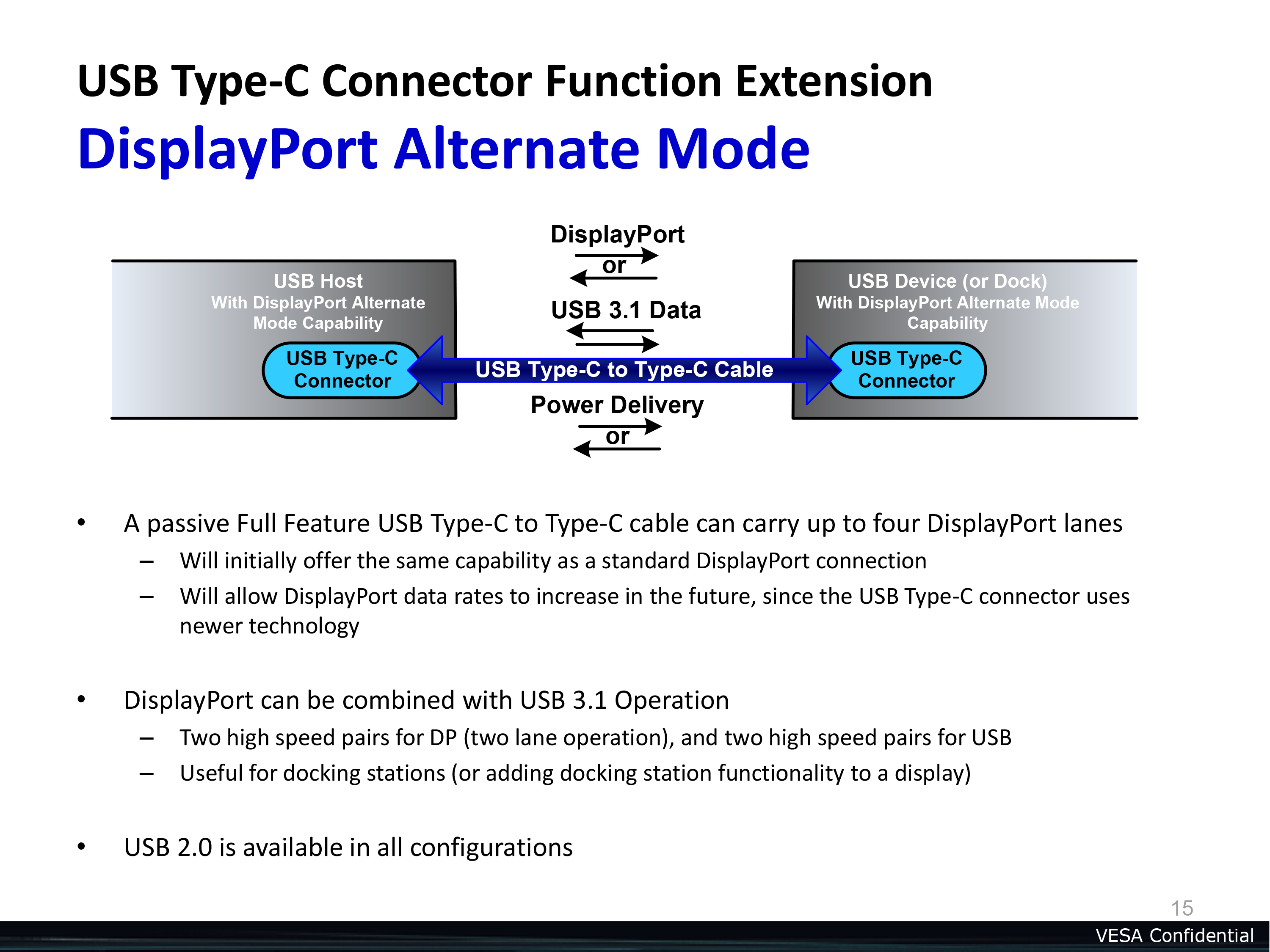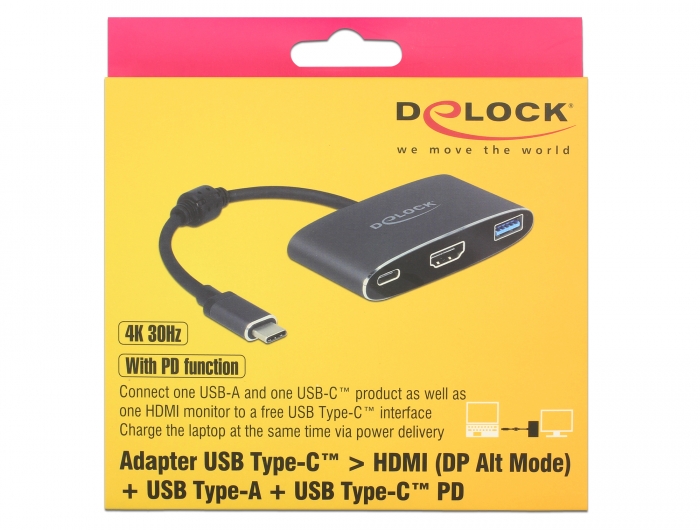In a regular DisplayPort 1.4 cable, there are four data lines that transfer DP data at 8.1 Gbps unidirectionally; this configuration is possible within a passive full featured USB Type-C to Type-C cable by configuring four USB data lines as Alt Mode and having them transfer DP data in one direction per lane, over four lanes. Multi-stream transport offers an easy setup, by natively working on any Windows device that supports DP Alt Mode over USB Type-C. This USB-C dual-monitor adapter is Thunderbolt 3 compatible, and offers plug-and-play installation with no drivers or software required. Release Highlights To enable the latest DisplayPort 1.3 / 1.4 features, your graphics card may require a firmware update. Without the update, systems that are connected to a DisplayPort 1.3 / 1.4 monitor could experience blank screens on boot until the OS loads, or could experience a hang on boot.
Purpose


Installs the DCH-compliant Thunderbolt™ bus driver for the Intel® NUC products with Thunderbolt using Windows® 10. This driver is required if you plan to connect Thunderbolt devices.
What are DCH drivers? Click here for more information.
How to install
Double-click Thunderbolt™ Software Installer.exe.
Note
If the driver won't install and you are using a supported operating system, try one or both of the following:
- Plug a Thunderbolt device into the Intel NUC and run the installer again.
- Uninstall the current driver, then run the installer again.
The Thunderbolt Control Center should load automatically after the driver is installed and if or when you're connected to the Internet. If it doesn't, you can download it from this link: Thunderbolt Control Center software (available on the Microsoft Store)
The Thunderbolt Control Center allows you to approve and manage Thunderbolt devices.
Some IT departments might have a group policy that prevents you from downloading apps from the Windows Store. They can choose to set up a private store with approved apps. See the following for more information:
Supported Operating Systems
- Microsoft Windows 10-64 - October 2018 Update 1809 (RS5)
- Microsoft Windows 10-64 - May 2019 Update 1903 (19H1)
- Microsoft Windows 10-64 - November 2019 Update 1909 (19H2)
- Microsoft Windows 10-64 - May 2020 Update 2004 (20H1)
- Microsoft Windows 10-64 - October 2020 Update (20H2)

Not sure if this is the right driver for your Intel® NUC?
Run Intel® Driver & Support Assistant to automatically detect updates.
Dp Alt Mode Driver Asus
In the world of cables, USB Type-C is considered to be the most powerful and versatile connector type to date. One of Type-C’s features that allows for its flexibility is Alt Mode, which can optionally support non-USB signals including DisplayPort (DP) technology. This allows users to take advantage of multiple technologies all through a single cable, maximizing efficiency.
In this article, we’ll discuss how DisplayPort protocols operate on Alt Mode over a Type-C cable and how it compares to the operation of a standard DisplayPort cable.
Inside Type-C and its SuperSpeed Pairs
A USB Type-C cable connection can act as a USB host, USB device, USB-PD power consumer, USB-PD power supplier, and as a DisplayPort video connection. Inside the Type-C connector, there are 24 pins that serve a variety of functions that make these configurations possible. Specifically, the DisplayPort video protocol can be configured using Alt Mode, which can be carried out over the USB Type-C standard.

USB Type-C cables include four pairs of SuperSpeed wires, which can be used for high speed data transfer or can be configured as Alt Mode to support third party protocols. There are four differential high speed lanes – for USB there are two SuperSpeed receiver differential pairs and two SuperSpeed transmitter differential pairs, sometimes called a lane. With USB specification 3.2 and the 2x2 mode, the cable can support bidirectional bandwidth of up to 20 Gbps by using two lanes simultaneously with each lane carrying 10 Gbps, thus creating a dual lane operation that can reach up to 20 Gbps.
Photo by Tony Webster on Flickr
Alt Mode Configuration Supports DisplayPort Protocol
Because DisplayPort signaling supports packetized data transmission like USB, enabling DP through Alt Mode on the differential SuperSpeed wires is possible. With USB 3.2, two or four of the differential high speed lanes can be used for Alt Mode. If USB data transmission is required, it will use two lanes, leaving the remaining two for Alt Mode, otherwise, all four lanes are available for Alt Mode.
In the two lane mode, the Alt Mode for DisplayPort protocol can support 4K resolution at 60 Hz, or HDR 4K at 60 Hz using 4:2:0 and 12bpp. If all four lanes are used to enable Alt Mode for DisplayPort, it will allow DisplayPort to operate at its full performance at up to 8K x 4K at 24bpp, 60Hz refresh, 4:2:0 format for one display, per the DisplayPort 1.4 specification. With the recently released DisplayPort 2.0 specification and the coming soon cables, this increases to an incredible 16K x 8K at 30bpp, 60 Hz refresh, 4:4:4 HDR format with compression. In either configuration, the DisplayPort Aux channel uses the SBU pins within the Type-C connector.
Because certain pins are required to be included and available for use within a Type-C cable no matter the configuration, it allows users to expect certain features including USB and video data transfer and power charging. Even if all SuperSpeed lanes are being used for full DisplayPort performance, USB 2.0 High-Speed pins will become activated, allowing the user to obtain at least a 480 Mbps bandwidth. Additionally, CC and GND lines are also required to be available, ensuring that the USB Power Delivery protocol is available to support USB Power Delivery device operation.
Obtaining DisplayPort Performance through a Type-C Cable
How can the Type-C connector support full performance of DisplayPort 1.4? It has to do with how the SuperSpeed lanes are configured. The USB protocol transfers data bidirectionally, allowing it to transmit and receive data per lane from one end of the cable to the other using one positive and one negative wire each. Per the USB 3.2 Gen 2x2 specification, one lane can transmit up to 10 Gbps, so if both lanes are used to transmit data concurrently, this means that 20 Gbps can be transmitted and 20 Gbps can be received over the 4 lanes.
The DisplayPort protocol works a little differently where it only transfers data in one direction. In a regular DisplayPort 1.4 cable, there are four data lines that transfer DP data at 8.1 Gbps unidirectionally; this configuration is possible within a passive full featured USB Type-C to Type-C cable by configuring four USB data lines as Alt Mode and having them transfer DP data in one direction per lane, over four lanes. With DisplayPort 1.4 supporting a total of 32.4 Gbps over 4 lanes, full performance of DisplayPort is possible with the USB Type-C cable.
More on the Latest Standard DisplayPort Cables
The Type-C connector has proven its worth in the industry with its continuous adoption and partnership with numerous technologies, including video protocols like DP. While Type-C allows the DP specification to operate at its full performance, standard DisplayPort cables are still very viable for users looking to transmit video signals, as DP is widely implemented in many devices including televisions, game consoles, and laptop computers. For a more in-depth analysis on the DisplayPort and its latest features between DP specifications 1.4 and 2.0, visit our article, “DisplayPort 2.0 is the Latest DisplayPort Spec – How does it Compare to DisplayPort 1.4?”.
Testing Cables to Ensure Compliance and Safety
Ensuring cables are properly and safely assembled is imperative to allow users to exploit the advanced features Type-C offers. There are multiple factors that can prevent the cable from operating per the standard; anything from misaligned pins or wires to poor signal quality can cause functionality issues for USB and Alt Mode for the DisplayPort protocol. With Total Phase’s Advanced Cable Tester v2, it’s easy to verify that all aspects of the cable, including pin continuity, DC resistance, E-marker, and signal integrity are up to standard. To verify all pins including SuperSpeed pins are aligned correctly without any shorts, opens, or routings, the Advanced Cable Tester v2 provides a complete overview of each pin with a dynamic visualization of results for easy debugging. The signal integrity tests allow testers to measure the quality of the signal on the High-Speed and SuperSpeed pairs up to 12.8 Gbps per channel to ensure that the cable can handle the appropriate bandwidth per the specification.
While many manufactures go through compliance programs to keep up with the latest USB and VESA specifications and certifications, it’s not the only hurdle to overcome to keep bad cables from landing in the hands of consumers. Quality testing beyond certification is vital for mass scale production, however, even common quality control methods like statistical process control and functional testing are not foolproof. With Total Phase’s Advanced Cable Tester v2, manufactures can quickly and affordably test USB, Apple Lightning, HDMI and DisplayPort cables without the fear of overlooking specific criteria needed to meet cable specifications.
Dp Alt Mode Driver

Dp Alt Mode Driver Asus Mac
To learn more about how the Advanced Cable Tester v2 can help ensure your cables are up to standard, please contact us at sales@totalphase.com.